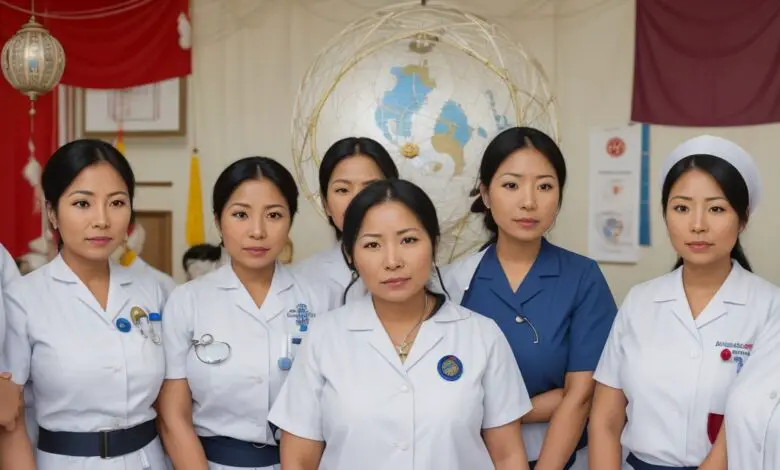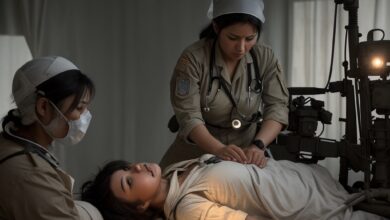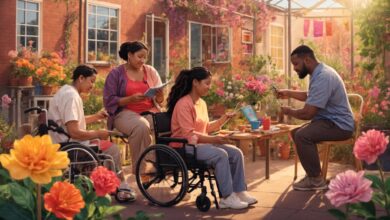Cultural Sensitivity in Nursing: Tailoring Care to Communities

Ah, the world of nursing. It’s not just about taking temperatures and administering medicine, is it? At the very heart of it, nursing is about understanding people. And people, as we know, come with a rich tapestry of backgrounds, beliefs, and life stories. Enter: cultural sensitivity. Hang onto your hats, folks! We’re diving deep into the world of nursing, and how it’s adapting to our ever-globalizing world.
1. Introduction
Ever walked into a room and felt completely out of place? Now, imagine feeling that way in a hospital bed. Scary, right? Cultural sensitivity in nursing is all about ensuring that no patient ever feels that way. It’s the art of tailoring healthcare to fit the unique backgrounds of every individual.
When you break it down, cultural sensitivity is a blend of understanding, respect, and adapting to the diverse tapestry of cultural nuances. Why does it matter, you ask? Well, imagine needing medical help, and the person taking care of you doesn’t “get” you. Not ideal, huh?
2. Historical Context
Let’s hop into our time machines for a second and zip back a few decades. The world of healthcare wasn’t always as woke as it is today. There was a time when healthcare was one-size-fits-all, with little regard for individual backgrounds.
But, thankfully, like bell-bottom jeans, those days are behind us. Over the years, medical bigwigs noticed that people from different backgrounds had different healthcare outcomes. A few landmark studies and some loud (and justified) public outcry later, and voila! The medical world started tuning into the importance of cultural sensitivity.
3. The Pillars of Cultural Sensitivity in Nursing
Let’s break this down Barney-style. Think of cultural sensitivity as a house. And like any house worth its salt, it stands tall on a few pillars:
- Respect: It’s more than just a catchy Aretha Franklin song. In nursing, respect means truly valuing each person’s uniqueness. For instance, if a patient turns down a treatment due to religious beliefs, it’s not just shrugged off. It’s understood, respected, and alternatives are sought.
- Awareness: This is the introspective part. Every nurse needs to hold up a mirror and recognize their own cultural biases. It’s not about being judgmental, but rather self-aware. After all, understanding ourselves helps us understand others better.
- Knowledge: Think of this as the nurse’s toolkit. It’s about being armed with information on various cultural practices, beliefs, and values. It’s what helps nurses tailor their care specifically for each individual.
- Skills: This is where the rubber meets the road. Nurses don’t just know about cultural differences; they act on that knowledge, adjusting their practices accordingly.
- Encounters: Experience is the best teacher. By interacting with people from diverse backgrounds, nurses hone their cultural sensitivity chops.
4. The Impact of Cultural Sensitivity on Patient Outcomes
Imagine a world where every nurse “gets” every patient. It’s a world where trust flourishes, communication flows freely, and medical misunderstandings are a thing of the past. This isn’t just some pie-in-the-sky dream. Cultural sensitivity can turn this into reality.
By bridging the gap between different worlds, nurses not only build better relationships but also ensure that patients get the right kind of care. The proof is in the pudding: there are cases where multicultural interventions have drastically improved patient adherence to treatments.
5. Challenges to Achieving Cultural Sensitivity in Nursing
Alright, let’s not sugarcoat it. Becoming culturally sensitive is not a walk in the park. There are bumps along the road. Sometimes, even with the best intentions, we might lean on stereotypes or let our personal biases get in the way. It’s not just about knowing different cultures but about unlearning our biases.
Another biggie is language. Not all patients speak fluent English, and it can be a task to bridge that barrier. It’s like trying to read a book in a language you don’t understand. Frustrating, right?
6. Tools and Strategies to Enhance Cultural Sensitivity
But, fear not! For every challenge, there’s a solution. It’s 2023, and we have a plethora of tools and strategies up our sleeves:
- Comprehensive patient assessments: Think of this as a cultural deep-dive, helping nurses get the full picture.
- Continuous training: The world’s changing, and nurses are always on their toes, updating their knowledge.
- Interpreters and translation services: Breaking down the language barrier brick by brick.
- Cultural immersion experiences: What better way to understand a culture than to dive right in?
- Local Community Involvement: You know the saying, “When in Rome, do as the Romans do”? By involving local communities in decision-making processes, healthcare institutions can ensure that practices aren’t just pulled out of thin air, but are rooted in real-world understanding. Think of it as crowdsourcing cultural insights!
- Feedback Mechanisms: Remember that game of Chinese whispers we played as kids? Information can sometimes get distorted if not checked. Feedback mechanisms are essential tools that help nurses get a reality check, straight from the horse’s mouth – or, in this case, the patient’s.
7. The Role of Healthcare Institutions
Nurses aren’t alone in this journey. Healthcare institutions play the role of the supportive best friend, always having their back. They’re drafting policies, creating inclusive environments, and ensuring that nurses have everything they need to be the best version of their professional selves.
Institutions also bridge the gap between healthcare facilities and communities, ensuring that the care provided resonates with the local cultural ethos.
- Diversity and Inclusion Training: Institutions are investing big bucks in training programs. And no, these aren’t your run-of-the-mill, yawn-inducing lectures. These are interactive, immersive sessions that really dive deep into the intricacies of diverse cultures. It’s the difference between reading about swimming and actually jumping into the pool.
- Building Bridges with Community Leaders: Imagine having a cultural guardian angel who guides you. By partnering with community leaders, healthcare institutions ensure they have someone to turn to when in doubt. It’s like having a cultural compass, always pointing north.
8. The Global Perspective
The world’s a global village, and healthcare is its most bustling market. Countries worldwide are realizing the goldmine that is cultural sensitivity and are adapting their healthcare practices accordingly. International nursing bodies are also playing their part, promoting cultural sensitivity like it’s going out of style (which, by the way, it’s not).
- Case Studies from Across the Globe: Let’s globetrot a bit, shall we? Over in Scandinavia, they’re making waves with healthcare that’s tailored for their indigenous Sami population. Meanwhile, down under in Australia, there’s a surge in culturally sensitive care for the Aboriginal communities. These examples aren’t just heartwarming stories, but serve as blueprints for other countries to follow.
- Sharing is Caring: International conferences, forums, and seminars are mushrooming up, creating platforms for healthcare professionals to swap notes. It’s like a massive potluck, but instead of sharing casseroles, they’re sharing insights and strategies.
A Few Teasers and Takeaways
- The Language of Care: Ever heard of “medical jargon”? It can be as confusing as hieroglyphics for the average Joe. Add a cultural barrier to the mix, and it’s a recipe for confusion. But here’s a cliffhanger: institutions worldwide are coming up with innovative ways to tackle this. Stay tuned!
- A Personal Touch: We’ve all had that one favorite nurse or doctor, haven’t we? The one who just “got” us. Cultural sensitivity takes this a notch higher, ensuring every healthcare professional can be that “favorite” for someone.
- Challenges are but Stepping Stones: The road to cultural sensitivity isn’t devoid of challenges. But, here’s the silver lining: with each challenge overcome, the world of healthcare becomes a tad more inclusive.
Conclusion
As we draw the curtains on our deep dive, let’s pause and take a moment to appreciate the unsung heroes – the nurses. With each passing day, they’re pushing boundaries, breaking barriers, and ensuring that care isn’t just a medical term but a human one.
For all you readers out there, the next time you step into a healthcare facility, take a moment to notice the subtle nuances. The translator assisting a patient, the dietary preferences being catered to, or even the culturally relevant artwork on the walls. These aren’t mere coincidences but the result of a concerted effort towards cultural sensitivity.
The future is exciting, and if there’s one thing we can be sure of, it’s this: the world of nursing is all set to be a melting pot of global cultures, unified by the universal language of care.




